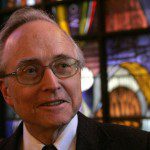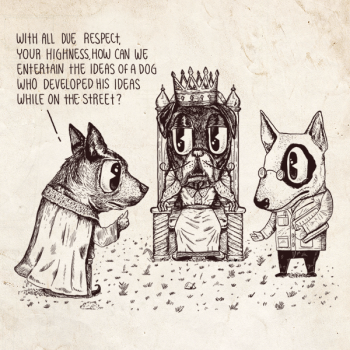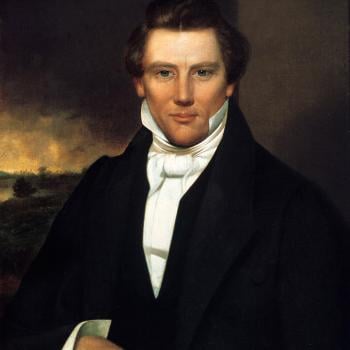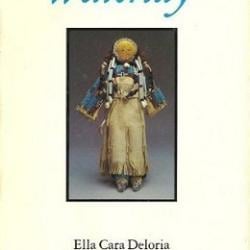Steven Miller’s first book, Billy Graham and the Rise of the Republican South, discusses the role of Graham and of evangelical Christianity more broadly in the political realignment of southern politics in the years following the Second World War. Miller’s second book, The Age of Evangelicalism: America’s Born-Again Years has already received a great deal of well-deserved praise. He graciously agreed to answer my questions about this recent publication. 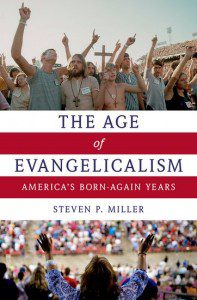
JT: What years encompass the Age of Evangelicalism? Reflecting the book’s title, you write that “American evangelicalism resides at the very center of recent American history.” What do you have in mind with that claim?
SM: My book covers the 1970s up to the near-present. More specifically, it starts with the “evangelical chic” of the Seventies (Jesus Movement, celebrity conversions, the “Year of the Evangelical,” and so on) and closes when that moment in American history had run its course, both culturally and politically. The climax is really the George W. Bush years, because that was when so many of the Seventies trends came to a head (hence, the chapter title “Second Comings”). Bush’s life intersected with the Jesus Movement (in the form of Arthur Blessitt) and more obviously with the Christian Right—the two poles, chronologically speaking, of what I call the “Seventies evangelical moment.” Obama’s election in 2008 seemed to herald a progressive evangelical resurgence, but the jury is still out on that one. It might just as well have signaled the fragmentation of evangelicalism’s impact on national politics (the political perspectives of actual evangelicals having always been fragmented, of course).
To be clear, I argue that evangelicalism was “at the center,” not that it was the center. In other words, it was not the central theme, but it shaped many major themes. To cite two big examples from intellectual history, it helped to problematize the assumption that America was secularizing (see Dean Kelley, George Gallup, Jr., et al) and contributed mightily to the obsession with civil society amid the presumed fragmentation of the social order (see Richard John Neuhaus, Robert Putnam, et al) . . . never mind the cultural and political aspects of the story. If I appear to anthropomorphize evangelicalism a bit here, that might be because the individual drivers of the above trends were so variegated. Sometimes they were self-identified evangelicals, but many times they were not.
This was a moment in both of the history of American evangelicalism and the history of America as a whole. Neither evangelical Christianity nor American history began on or about 1970, and both are likely to keep on chugging. But, during the forty or so years that my book covers, there was a remarkable amount of synergy and dynamism associated with what is often understood as an evangelical subculture within the rest of American society—enough, I argue, to suggest that those lines of division were quite porous. Evangelicalism was in too many places to merit analytical isolation.
My identification of evangelicalism as an “age” is not meant to be an exclusive claim. I am certainly not saying that the recent history of pop music revolves around Amy Grant or that Hal Lindsey deserves more attention than Barbara Tuchman. But I am saying that the concept of being a “crossover” writer or artist is misleading. At the very least, it is irrelevant for someone like Rick Warren. My use of “age” is a heuristic device, an effort to rearrange the seemingly familiar. As noted earlier, I am not claiming a central theme. All stories of influence in American history (or any history, for that matter) are narrower than the subject as a whole and thus are coexistent with contrary evidence. I write about a big country that contradicts itself, as the poet said.
JT: Let me give you a counterargument. Even as evangelical churches and organizations have thrived, American society has become progressively less evangelical since the 1950s. Popular culture by 1970 seems to have been less influenced by evangelicalism than in 1950. And moving forward from there, it doesn’t seem to me that evangelicalism has exercised a great deal of cultural influence (beyond evangelicals). Did American society become more or less evangelical during the years of your study?
SM: Without doubt, the big picture story has featured a species of secularization, often in the form of pluralism (accepting diversity) and self-pluralism (being diverse). The upshot, relatively speaking, has been the disestablishment of Christian hegemony. Turning to your specific question, though, I suppose it depends how you define influence. I characterize evangelical influence as “diffuse,” but not as emanating in a kind of one-directional, centrifugal fashion. In other words, non-evangelicals made evangelicalism influential as much as evangelicals themselves did.
The kind of influence I am talking about only makes sense within a post-Christian America context. History in the ironic mode can sometimes be a little too cute. But I think we do have an irony here: Evangelicalism’s influence became broader as secularization became a more powerful force. This dynamic—the fact that People for the American Way made evangelicalism important as much as James Dobson did—led many evangelicals not to appreciate the breadth of their influence. This makes sense, because it was not always the kind of influence they desired.
The question about America becoming more or less evangelical reminds me of an occasional debate in Mennonite circles (my tradition) about whether “post-Christian” or “post-Christendom” actually are appropriate labels to apply to the United States. Persons who have come into the Mennonite church by way of Hauerwas or other neo-Anabaptist interlocutors tend to be quite comfortable with that language. Many of them were cradle evangelicals. Many folks who were raised Mennonite, on the other hand, grew up distinguishing their faith from the cultural Christianity surrounding them. They saw more than a few of their peers leave the Mennonite church for more explicitly evangelical ground. I remember well when a Christian Coalition publication started appearing at my home congregation in the 1990s. In a lot of ways, that development represented a form of assimilation.
A snappier answer to your question is “less Christian, but more evangelical.”
JT: Here’s one question I’ve never been able to definitive answer. Jimmy Carter received a wave of evangelical enthusiasm (at least from some parts of the country) in 1976, then ignored his evangelical constituency until his reelection campaign (when it was too late). At least before 1979-1980, Carter could get along quite well with conservative evangelicals like Billy Graham and Bill Bright. Why the almost complete disregard?
SM: Although Jimmy Carter is not a particularly under-analyzed president (especially for a one-termer), he remains an enigma in many ways—perhaps because of the “prickly” side of his personality (as I note in the book) and perhaps because his political failings as president became so obvious in the aftermath of the Reagan Revolution.
This question presumes, understandably, that Carter thought of (or should have thought of) evangelicals as a possible voting bloc. Here, I think it is important to distinguish between evangelicalism as a rising political force in the 1970s and born-again Christianity as a character-driven political package. The latter—Carter’s image as a good Christian man—clearly benefited him in 1976. In retrospect, it does seem odd that he did not finesse his relationships with certain evangelical leaders, although I think the best he could have done with Bright and Graham would have been to make them a little more publicity-shy than they already were. This was a period of great flux in American politics as a whole and evangelical politics in particular. By the 1980 election, Jerry Falwell was becoming as politically powerful as Graham and Bright, perhaps more so, because is his unabashed partisanship. Carter never had a chance with him.
JT: You suggest that evangelicalism’s public significance has collapsed in recent years. How did we get so quickly from what you term an “evangelical scare” (i.e., the fear that that GOP was about to impose a Christian theocracy on the United States) to evangelicalism’s apparent political irrelevance?”
SM: As I have stated elsewhere, my book is not an autopsy. I certainly would say that “irrelevance” is not the right word, especially if you reside in a Republican-leaning state in the Midwest or South. However you want to frame it, though, the decline narrative—long applied to liberal Protestants—has come to evangelicals, too. I think quite clearly evangelicalism is no longer the perceived standard for religion-in-politics that it was for so long. What changed? Well, certainly one story is that Democrats figured out how to look a little more faith-friendly even as they continued to attract secular voters. This move began with Bill Clinton, but Obama took it to a whole new level. One political advantage (probably the only advantage!) of Obama’s un-orthodox religious background is that he got to write his own faith story. By the time he became a national phenomenon, there was a pretty clear opening for him to capitalize on progressive (and eventually moderate) evangelical unease about Bush. By contrast, folks like Jesse Jackson, Mario Cuomo, and even Al Gore fit into existing templates for how to be a religious Democrat. They had less flexibility. The impact of Democratic faith-friendliness was less in terms of vote transfers and more in terms of distancing the party from perceived extremism. (In this sense, it compares to Republican outreach to minority groups.)
Having said all of that, the relative decline of evangelical politics is indelibly linked with the presidency of George W. Bush. Our politics is still shaped by the utter collapse of the Bush presidency in a way that is easy to forget while we are the midst of Obama’s sixth-year blues. Bush deeply damaged a type of evangelical politics that, while firmly conservative, was hardly the bombastic rightism of Falwell’s 1980s heyday. The dream of compassionate conservatism lives on in Michael Gerson’s Washington Post columns. However, in the aftermath of supply-side binges, a war of choice, and a global recession, charitable choice now seems more like a footnote. That is not how things looked in January 2001. Evangelicals were perceived to be at the core of the Bush coalition, so their image paid a price when Bush limped out of office.
JT: Evangelicalism thrived during the sixty years after WWII in large part because evangelical ministries excelled at attracting and keeping young people. Now, it seems that evangelical Christianity is anathema to broad swaths of American “millennials.” How did this happen?
SM: Revivals come and go in American history. Historians should know better than to play futurist and write off any religious tradition. I write about how evangelicalism influenced recent American history in certain ways. The decline of a certain type of influence does not preclude the emergence of another type. For example, the contribution of the broader emergent church community to the ongoing urban renaissance in the United States is a fascinating story. Also, it is important to note that any evaluation of evangelical decline—or resurgence, for that matter—is highly dependent on the extent to which one places Pentecostalism within the evangelical tradition.
To answer your question . . . At the risk of being glib and reductive, the Christian Right is the leading culprit. This is true even though, one decade removed from the 2004 election, many politically moderate or progressive Americans are probably less inclined to even use the terms Christian Right or Religious Right. Instead, they just talk about conservatives, Republicans, or tea partiers. As a result of the 2012 election, a certain sector of the millennial generation may forever think of Billy Graham as just another anti-gay marriage Christian in the bag for the GOP. Despite the title of my first book, I would strongly dispute that characterization. Still, it’s not hard see how it came about.


